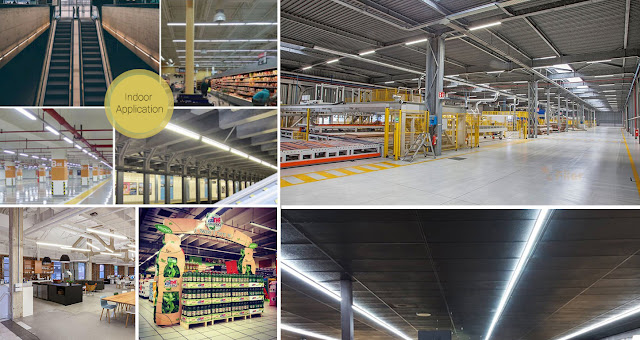Since the launch of LED technology, The new generation of T8 LED tubes delivers optimum brightness at low power consumption. These tubes are divided into three types.
- Type A: Ballast Compatible
- Type B: Not compatible with the ballast
- Type A + B: Can work with or without the help of ballast
The ballast section controls energy distribution to ensure that the required voltage, current, and waveform are present when a traditional light source like the fluorescent tubes or HID lamps is turned on and operated.
T8 LED bulbs do not require this additional electricity consumption; therefore, eliminating the ballast saves you energy right away because you aren't wasting energy to ballast draw. Each modified fixture uses a few watts less without a ballast.
T8 retrofits assist the older fixtures by using the ballast feature to control power consumption and distribute uniform brightness. Usually, the use of ballast has lowered down, giving way to new generation T8 LED tubes.
Direct wired Type B LED tubes to pull power from the line voltage and sources them directly to the non-shunted tombstones and bypass the ballast.
T8 single end tubes
The live and neutral pins of single-ended LED T8 tubes are on the same side of the light. This end will be known as the power "Input" end. The operation of single-ended LED bulbs placed by direct wire does not require a ballast installation. The ballast needs to be removed and the lamp holders replaced if the fixture is being utilized inside a retrofit.
Because most direct wire T8 LEDs are single-ended, you should only need to connect one side of the fixture to the power source or one pair of sockets.
The installation of a single-ended tube is straightforward, and you have to remove the ballast to get efficient power usage of the fixture.
Why use non-shunted sockets for direct wire T8s?
The difference between the non-shunted and shunted LED T8s depends on the electricity flow inside the fixture.
Double-ended direct wire LED tubes can utilize either type of lamp holder or any single-ended T8 tube that needs shunted sockets.
Hybrid tubes
Hybrid LED tubes can be used with shunted or non-shunted sockets in the plug-and-play mode. If you're rewiring your fixture for direct wire operation, you should replace any shunted sockets with non-shunted sockets. Your hybrid will now function as a direct T8 LED tube after rewiring. These fixtures are beneficial and, upon installation, save you 65% on your energy consumption.
The lifespan of T8 LED tubes
When compared to standard bulbs, LED tubes provide a higher return on investment. Fluorescent tubes have a life expectancy of 7,000 to 15,000 hours. In comparison, our T8 LED Tubes offer a 50,000-hour lifespan.
To equal the lifetime of T8 tubes, They are more power-efficient than fluorescent tubes. Another advantage is that fluorescent tubes are made of brittle glass that can quickly shatter. They emit harmful gases (mercury) into the environment.
T8 LEDs, unlike fluorescent tubes, do not emit dangerous mercury vapors and. As a result, you can install T8 LEDs in light fixtures with confidence, and these fixtures are not easy to break at all.



Comments
Post a Comment